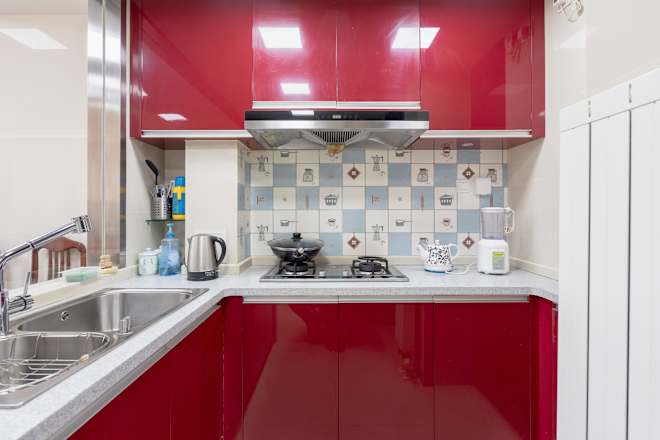GM’s Broken 6.2L V8s Are Stranding Owners for Weeks as Replacement Engine Pipeline Dries Up
The situation has left dealers struggling to source new engines and owners with no clear repair timelines, and it's especially dire for people who need their trucks for work. The post GM’s Broken 6.2L V8s Are Stranding Owners for Weeks as Replacement Engine Pipeline Dries Up appeared first on The Drive.

General Motors is now the subject of an NHTSA investigation after more than a thousand complaints were logged over sudden and catastrophic failure of some of its “L87” 6.2-liter V8s—a core power plant for Cadillac, Chevy, and GMC trucks. It’s actually the latest in a string of uncommon but linked reliability problems to impact the 5.3- and 6.2-liter small block families over several recent model years—a notably bad run for what’s supposed to be an uncomplicated, naturally-aspirated V8 engine.
But whether the engine in question was bricked by bearing failure or a collapsed lifter, a dead motor is just the beginning of this ordeal for many GM customers. While many of these engines are in fairly new models—the Cadillac Escalade, GMC Yukon and Sierra, and the Chevy Silverado, Tahoe, and Suburban—and still under warranty, that does customers no good when GM dealer service departments have no replacement engines to offer. A company source confirmed to The Drive that right now GM can’t build components of its 6.2s fast enough to both meet the demand in new trucks and fix all the broken ones.
The issue is especially magnified for fleet owners and operators, who are big buyers of these exact trucks for hauling, towing, and chauffeuring. The number of miles they can easily rack up on a two-year-old truck puts them out of warranty, so without an official recall, right now they’re stuck paying for a new engine out of pocket. The longer repairs take, the more money they lose. And now that the replacement parts pipeline has run dry, it appears dealers are resorting to desperate (and non-GM-approved) tactics to try and secure parts for their loyal customers, who in the meantime are left without their trucks—and without answers.




One such customer is Chey Eisenman of Chey Cab—a livery service operator in the Twin Cities. Chey told The Drive earlier this month that she maintains her own 2023 Escalade and employs a small team of independent operators (drivers who supply their own vehicles, as she does). When her Escalade began showing signs of lifter failure, she estimated she had about two weeks to line up a new engine before her under-hood time bomb blew; two weeks and six hours later, she was sidelined.
Even with the mileage her operators put on their trucks, her team is not used to dealing with catastrophic powertrain issues, Chey noted. The approximately $10,000 price tag for an out-of-warranty engine replacement is bad enough, she says, but life happens, and sometimes that’s just the cost of doing business. The problem is that Chey can’t do business at all right now, and without her Cadillac, she’s losing out on revenue equal to the cost of the repair each week it remains out of commission. As she enters week five without a working truck, those losses number in the tens of thousands of dollars. A normal customer could make do with a service loaner if offered one, but a limousine service cannot operate that way without jeopardizing its license.
Since she’d been on top of the ongoing lifter issues, Chey started shopping for a replacement engine immediately after the first signs of trouble. But her normal shop couldn’t help; nobody could sell them parts. That two-week head start came and went and Chey was no closer to locating a replacement engine. That nuisance has now become an ordeal spanning weeks with no end in sight.
“We’re the canaries in the coal mine,” Chey said of herself and other limo service operators. When quality control issues arise, commercial fleets often bear the brunt first—and hardest. While cab companies may perform engine replacements as a matter of course, a livery service is expected to have a new, showroom-clean fleet. Chey and the rest of her drivers typically put somewhere between 80,000 and 100,000 miles on their SUVs in a year, churning vehicles every 18 months to two years as they start to show signs of their hard service lives.

Chey usually avoids dealers for out-of-warranty repairs, but when her independent shop couldn’t line up a replacement V8, she turned to the dark side. The result has been even more frustration, as even the few service departments who have replacement L87s don’t want to part with them, presumably to keep them in stock for their high-value commercial fleet clients. A local dealer with multiple 6.2s in inventory told Chey she had “no hope” of securing one of them for her downed Escalade because she simply didn’t have the pull with ownership. The situation has become so dire that GM is pleading with dealers to stop skirting the replacement queue by hoarding motors:
Please only order for applicable VINs and not shelf stock.
Dealers should place engine orders CSO (Customer Special Order) and upgrade to SPAC with a VIN. All orders will be reviewed prior to being filled. All CSO’s will be cancelled daily. Only SPAC orders with a valid VIN associated with the vehicle engine listing will be released. Due to limited parts availability, parts may have quantity limiters in effect.
Chey’s wait is not unique. Reddit is peppered with stories of 6.2-liter service nightmares. While not everybody with a bad L87 is down with the same exact issue, several of those roads lead to engine replacement, bottle-necking the entire pipeline. As recently as last February, it appears that some dealers were still sitting on stockpiles large enough that they were willing to sell their spares, but the well has since run dry.
One poster claiming to be a GM tech said that they have resorted to rebuilding some of the engines in-house (against GM’s recommendations) rather than make their customers wait for a replacement. That’s not necessarily an option for all failure cases, and even when it is, it is still dependent on new parts being available for the rebuild. In some instances, techs are reporting that critical parts—including the bearings that prompted NHTSA’s investigation—seem to have also been in short supply for at least a year.
The result, as Chey describes it, is the service department equivalent of “Hunger Games.”
With demand being what it is, how are some dealers still managing to squirrel away motors? One of two things must be true: Either those parts were secured before GM imposed ordering restrictions, or dealers are finding ways around them. One can’t simply fabricate a valid customer VIN out of thin air, but other sources do exist. Dealer inventory seems risky, given the potential need for a real replacement; but could a service loaner or display model fly under the radar? We’d love to know the answer.
In the meantime, Chey calculates that’s she’s out pocket for about $30,000 since the failure, and is no closer to having her Escalade back on the road. The latest estimate she’s heard puts the replacement four weeks out, which prompted her to bite the bullet and buy a second truck—a 2025 Chevy Suburban—so that she can operate while she waits on a new engine. Her fingers remain crossed that the 2025 model year has been spared the same issue that sidelined her 2023.
The post GM’s Broken 6.2L V8s Are Stranding Owners for Weeks as Replacement Engine Pipeline Dries Up appeared first on The Drive.













![From Gas Station to Google with Self-Taught Cloud Engineer Rishab Kumar [Podcast #158]](https://cdn.hashnode.com/res/hashnode/image/upload/v1738339892695/6b303b0a-c99c-4074-b4bd-104f98252c0c.png?#)
































































